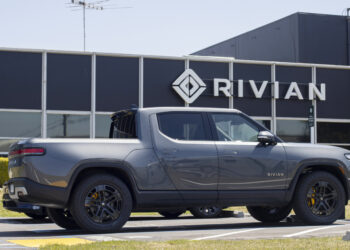Q1 Bookings Slightly Miss Estimates, But Profitable Growth and Autonomous Vehicle Plans Highlight Long-Term Vision
Uber (UBER) delivered mixed results for the first quarter of 2025 but maintained its momentum with a strong outlook for the second quarter, signaling confidence in its long-term growth trajectory despite macroeconomic uncertainty.
The ride-hailing and delivery giant reported first-quarter gross bookings of $42.8 billion, slightly below Bloomberg’s consensus estimate of $43.14 billion. However, bookings still rose 18% on a constant currency basis, reflecting resilient demand across Uber’s platform. Adjusted EBITDA came in ahead of expectations at $1.9 billion versus the $1.84 billion forecast, representing a 35% year-over-year increase.
Investors initially reacted negatively, with shares falling in pre-market trading—potentially due to hopes for a more substantial beat or even more bullish projections. Still, Uber’s second-quarter guidance surpassed Wall Street expectations, easing concerns over softening consumer demand. The company expects Q2 gross bookings in the range of $45.75 billion to $47.25 billion, compared to the $45.85 billion estimate. Adjusted EBITDA is projected between $2.02 billion and $2.12 billion, with analysts looking for $2.05 billion.
CEO Dara Khosrowshahi emphasized Uber’s ongoing operational efficiency and user engagement. “We kicked off the year with yet another quarter of profitable growth at scale, with trips up 18% and even stronger user retention,” he said. CFO Prashanth Mahendra-Rajah highlighted Uber’s financial discipline, noting the company generated over $2 billion in quarterly free cash flow.
Uber’s platform reached 170 million Monthly Active Platform Consumers (MPACs), up 14% year-over-year. Revenue in the ride-hailing and delivery segments grew 15% and 18%, respectively, while freight declined 2%, reflecting softer global logistics demand.
While Khosrowshahi avoided commenting directly on trade policy or political developments, he acknowledged the uncertain macro backdrop, stating that Uber delivered a “strong start to the year” amid a “dizzying backdrop of headlines on trade and economic policy.”
Uber is also doubling down on its autonomous vehicle initiatives. In addition to expanding its Waymo driverless rides in Austin and Atlanta, Uber announced a broadened partnership with WeRide, aiming to launch services in 15 new cities over the next five years. Separately, Uber and Pony.ai have partnered to deploy robotaxis in the Middle East.
Despite near-term investor caution, Uber’s sustained profitability, expanding autonomous ambitions, and strong user engagement suggest the company is positioned for continued growth in 2025 and beyond.
You might like this article:AMD Kicks Off 2025 With Strong Q1 Growth Driven by AI and Data Center Demand











